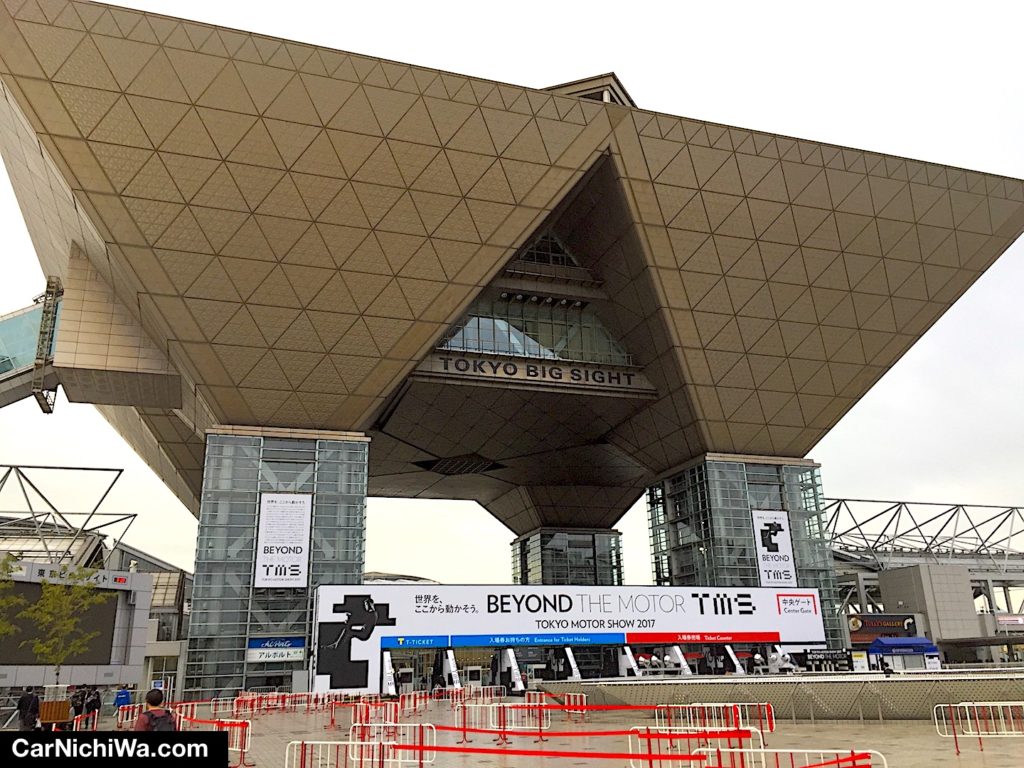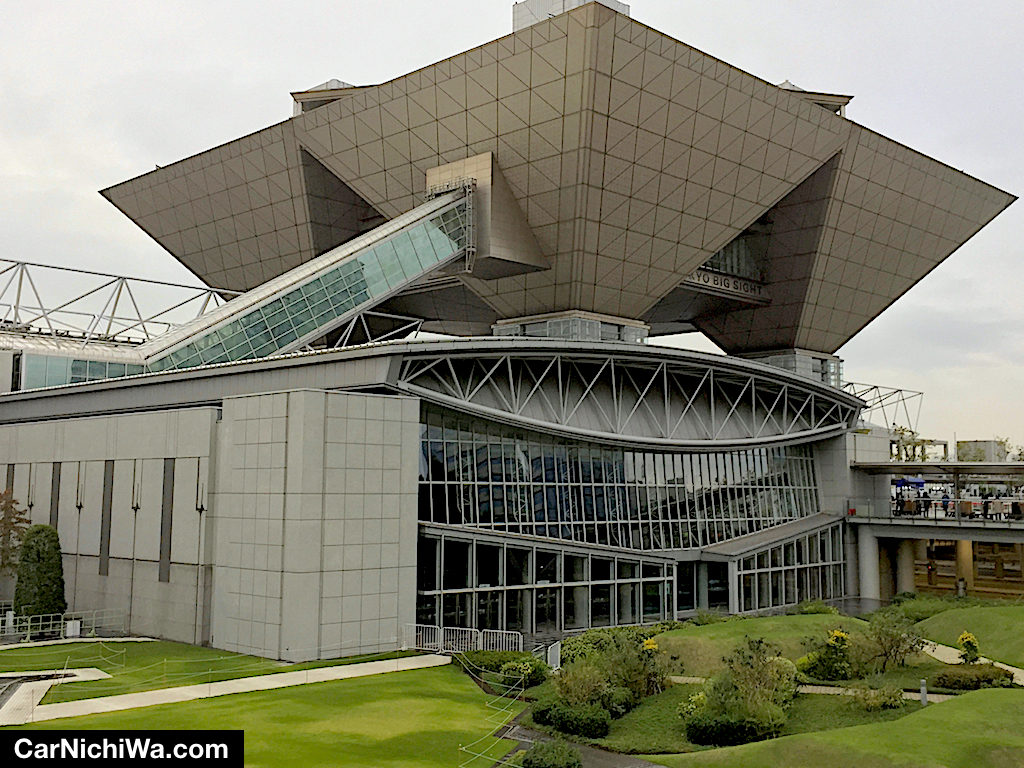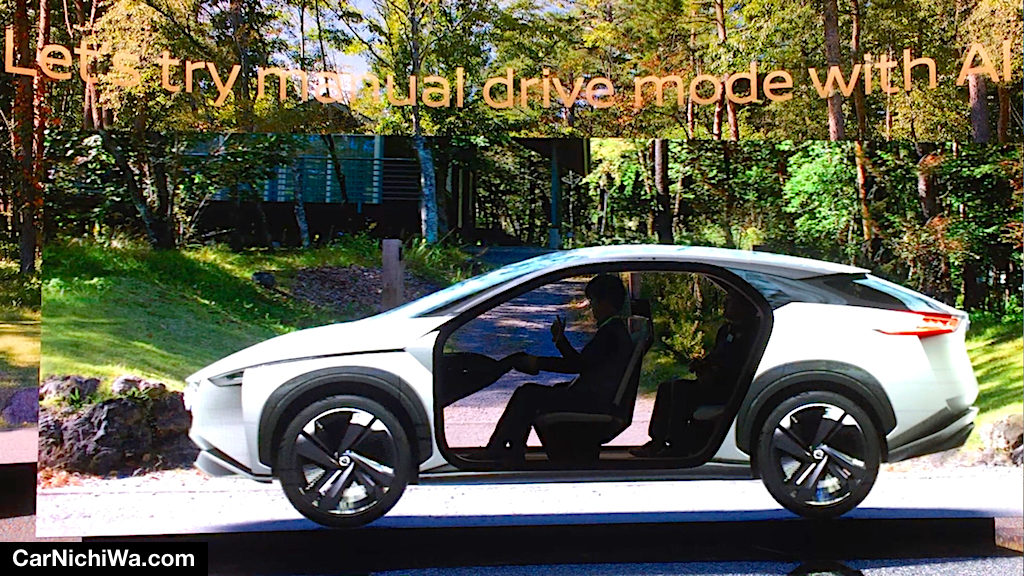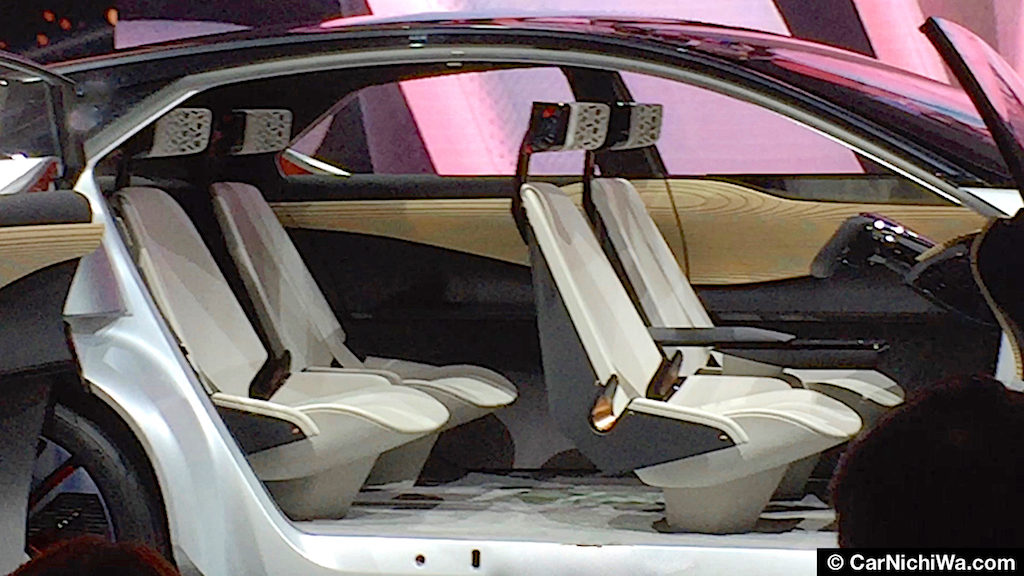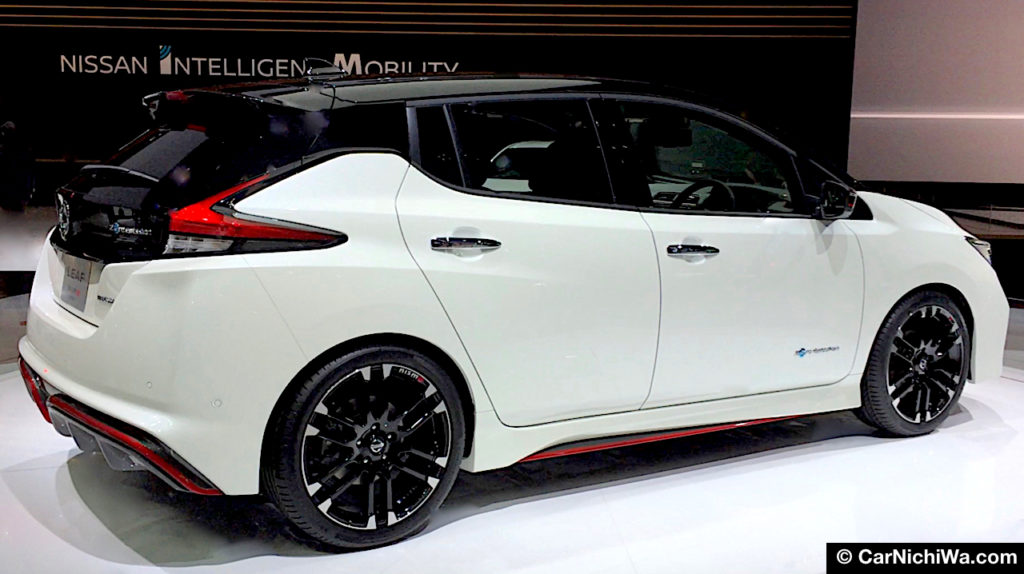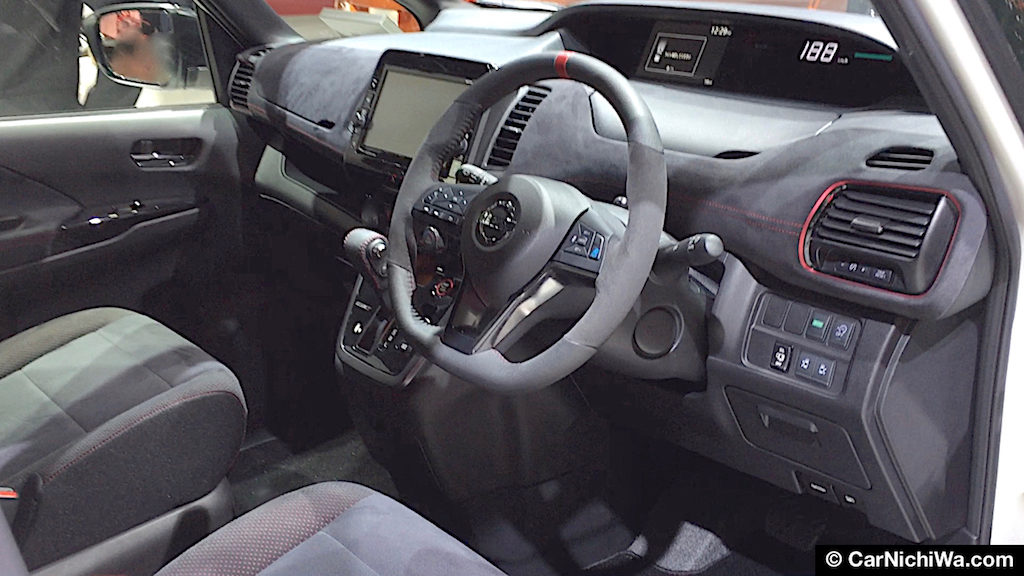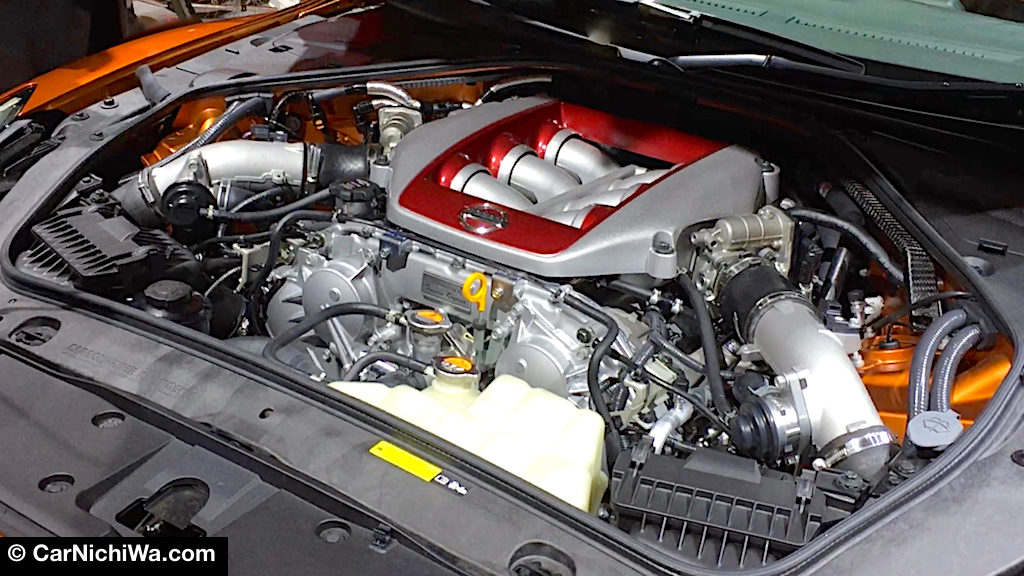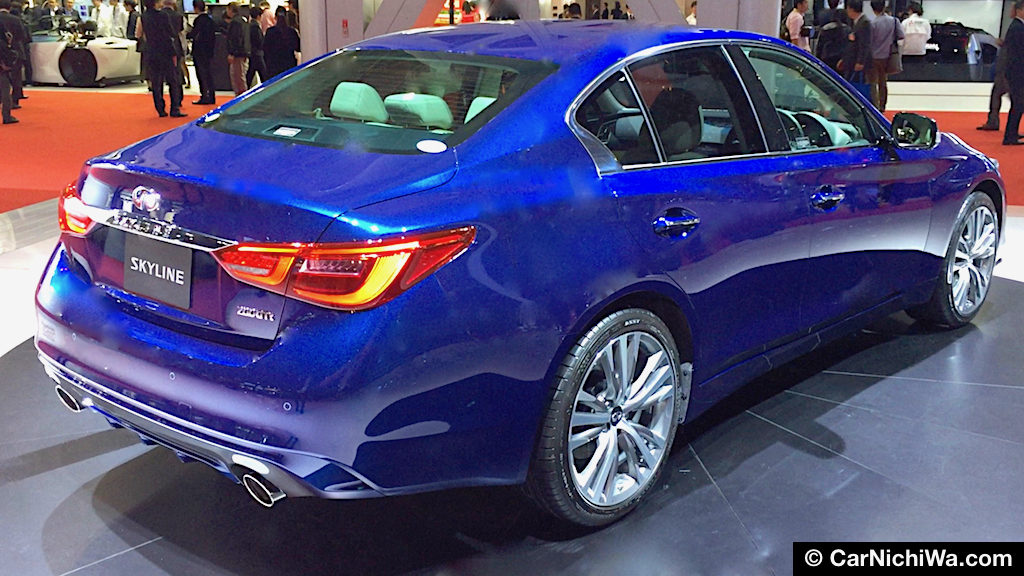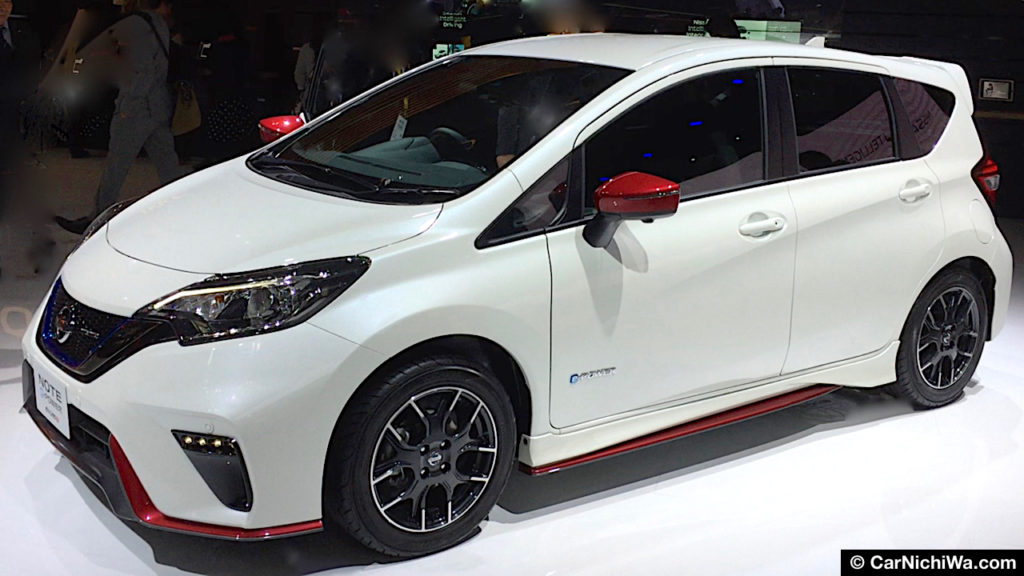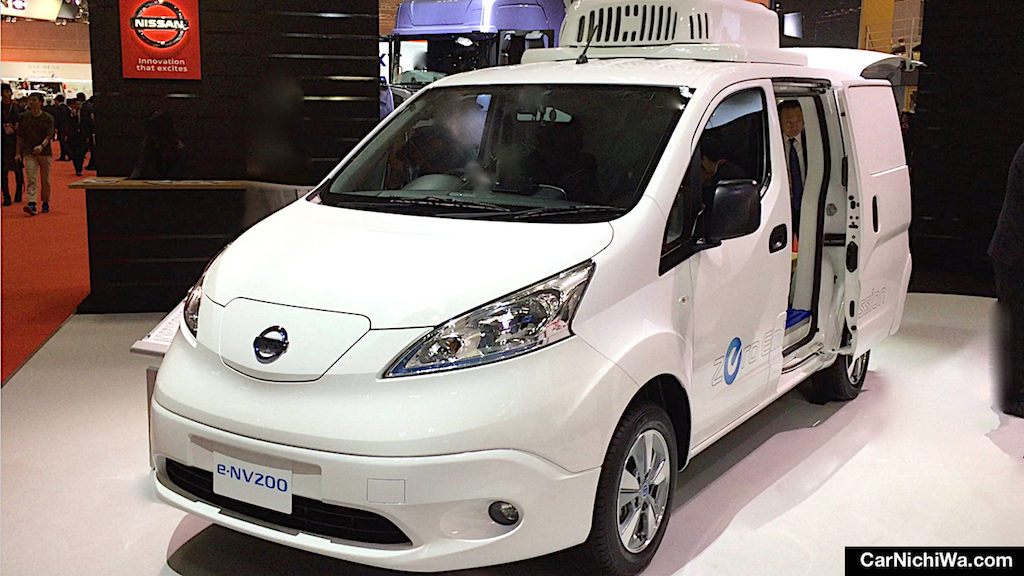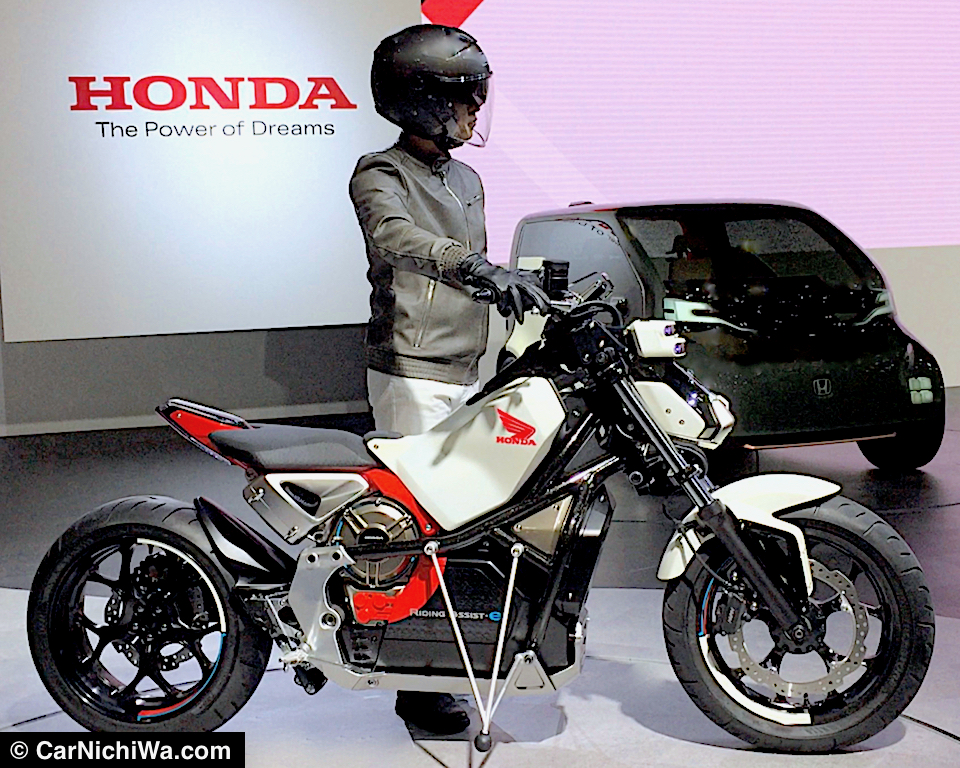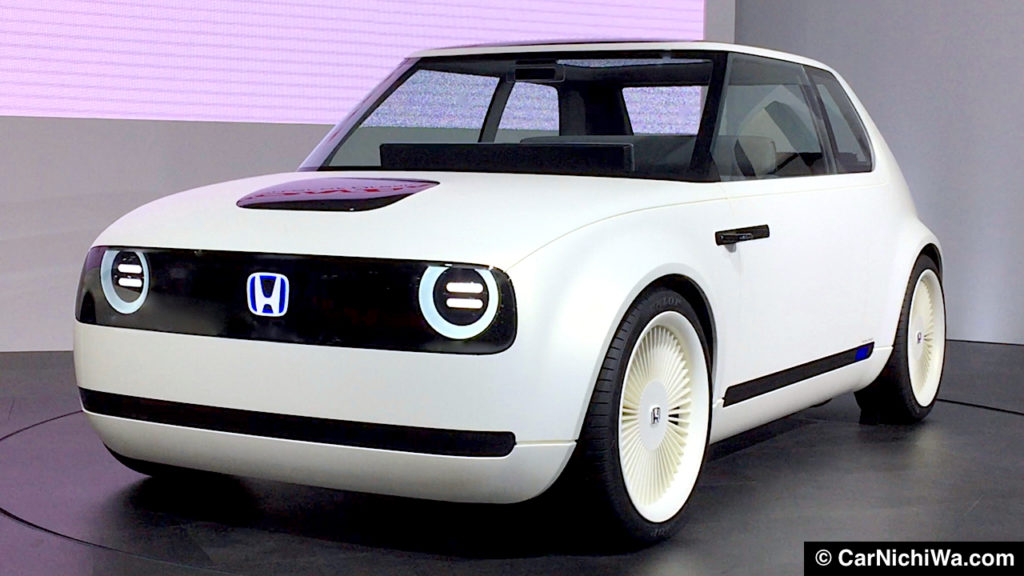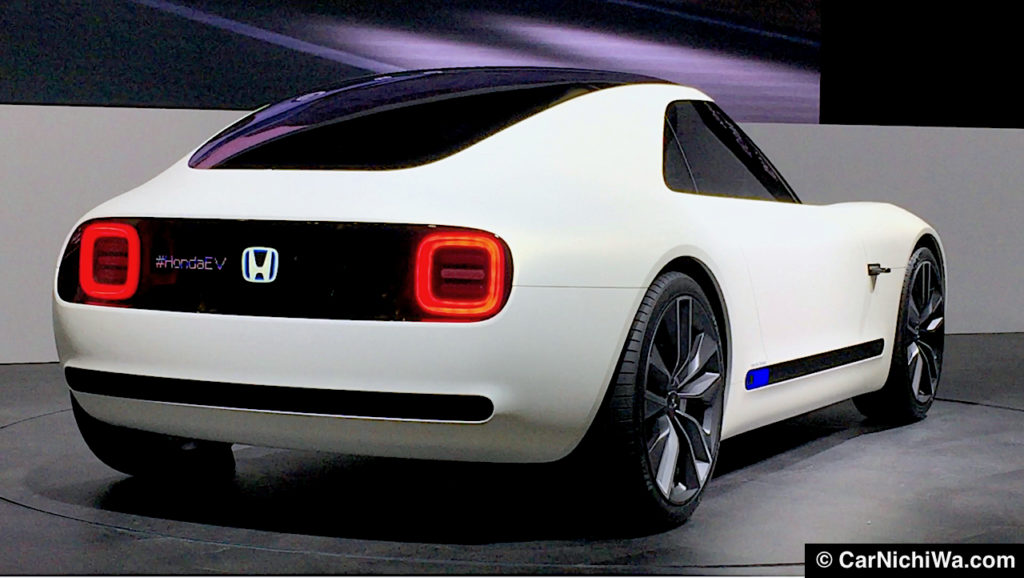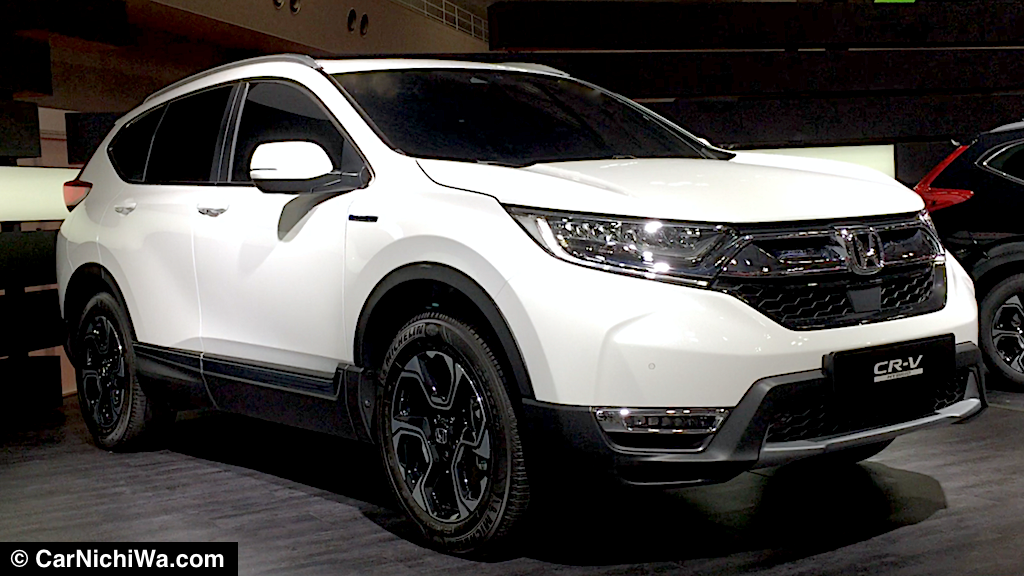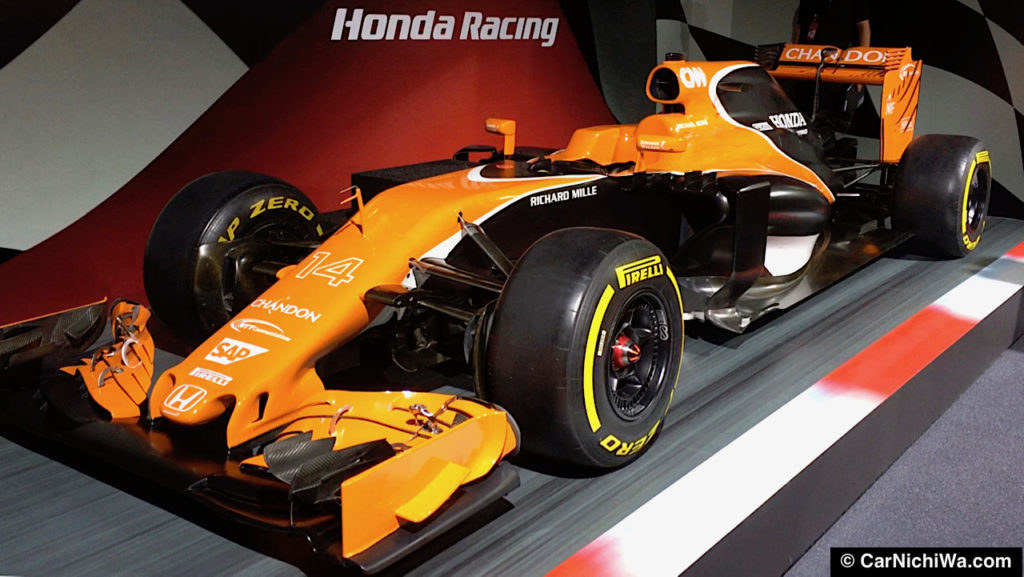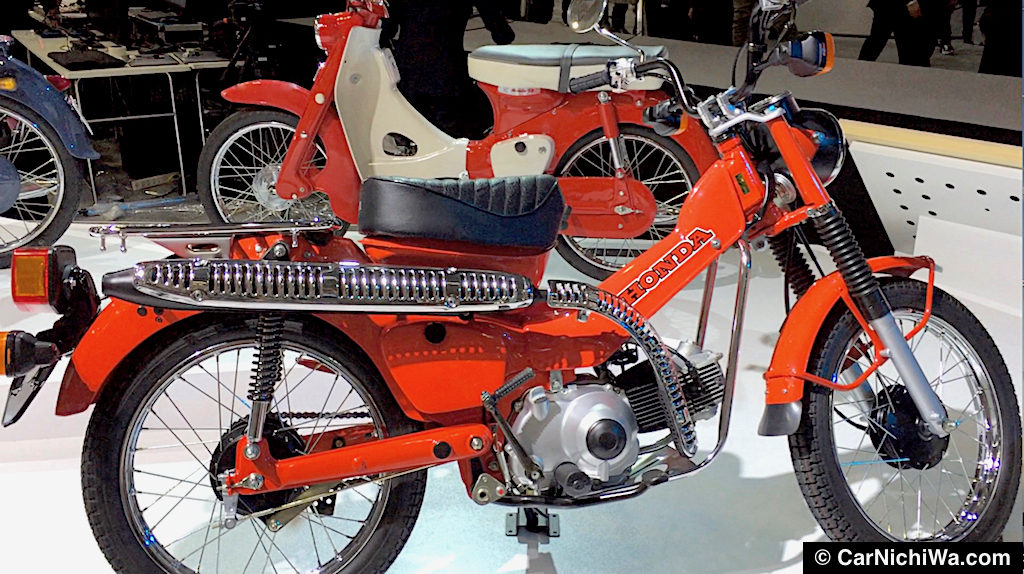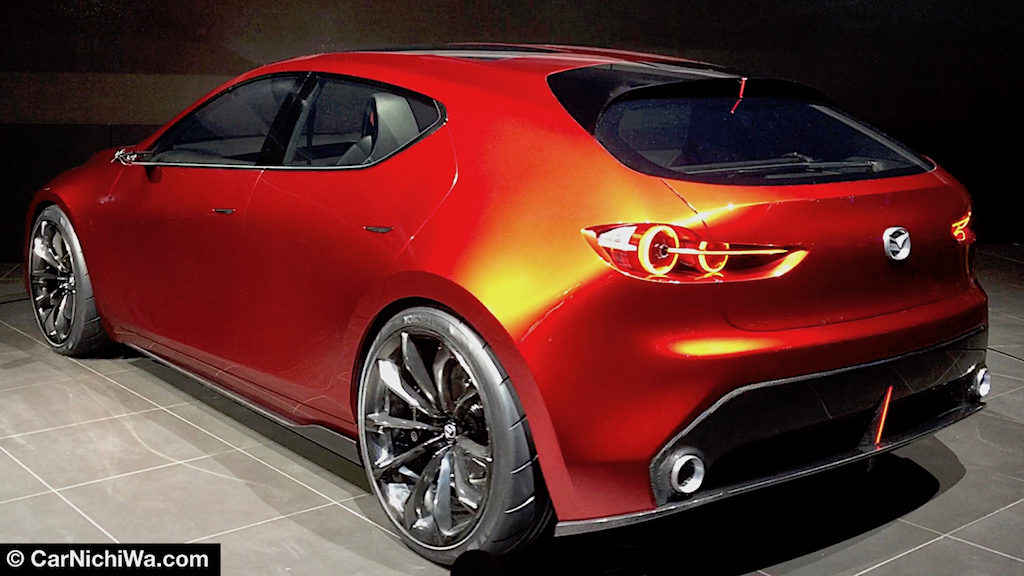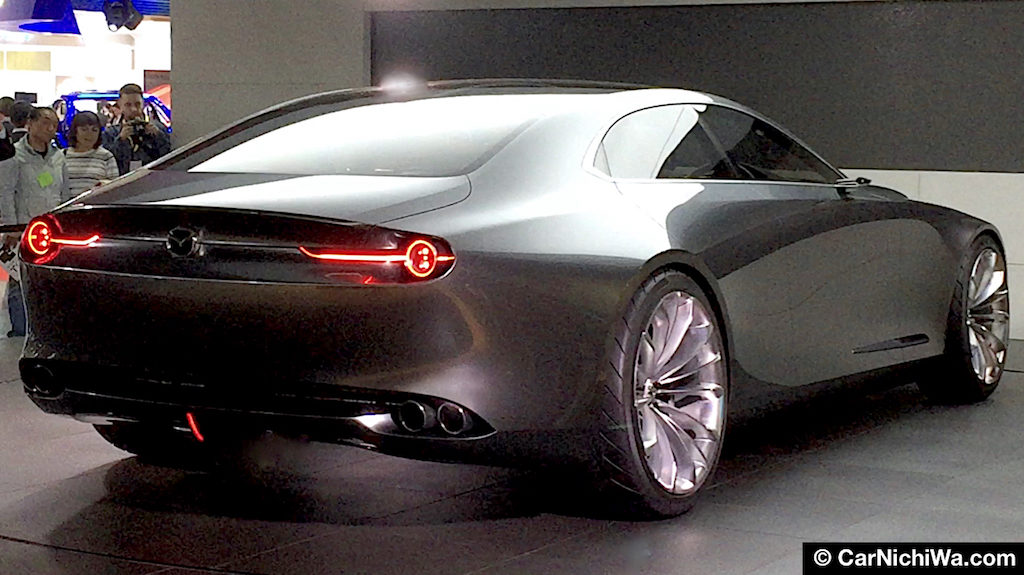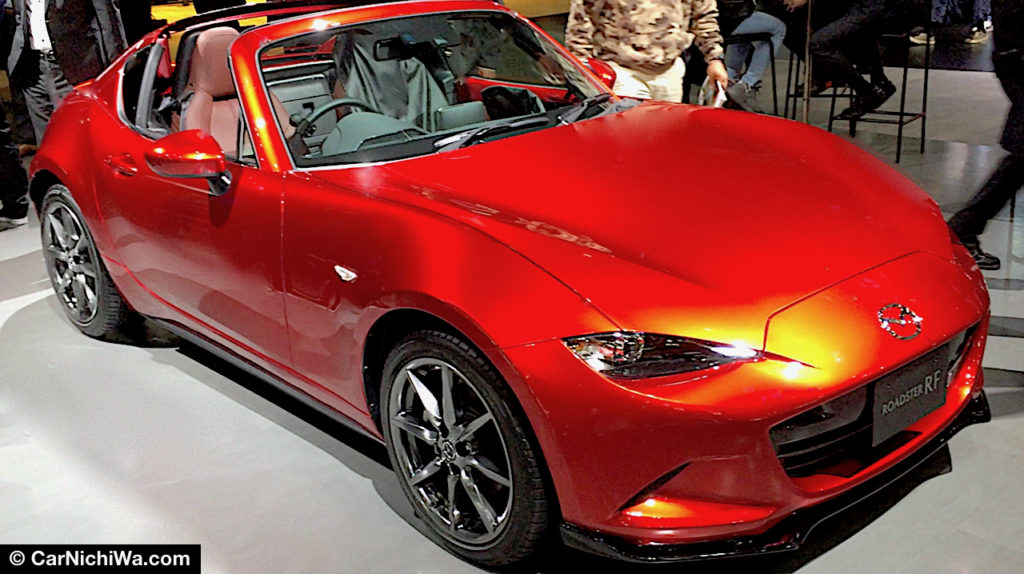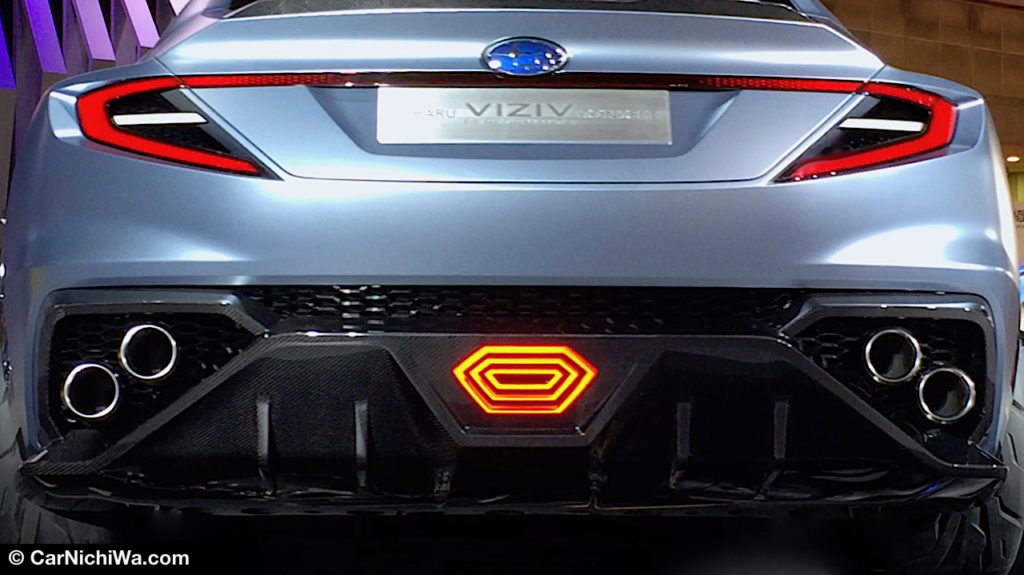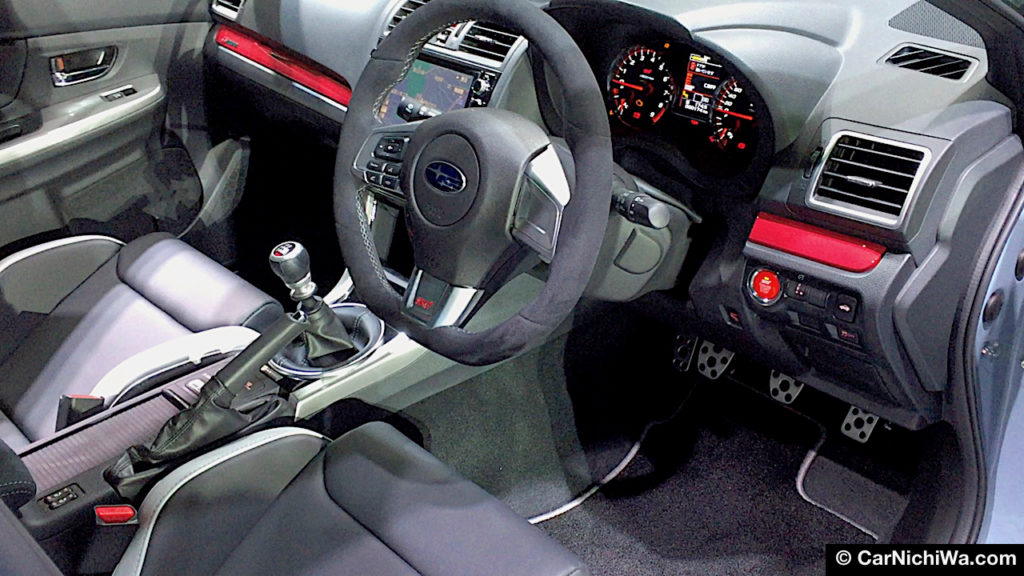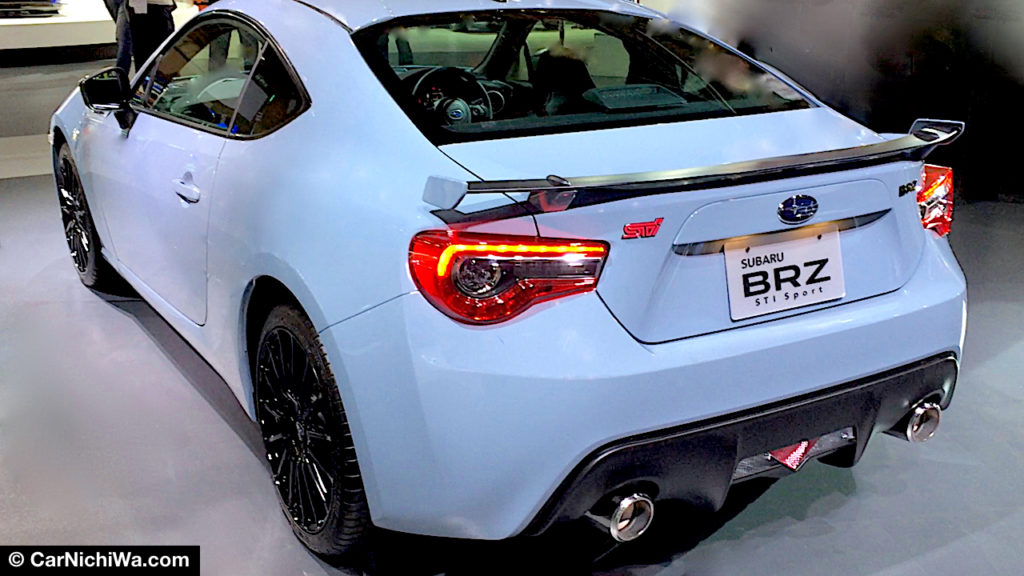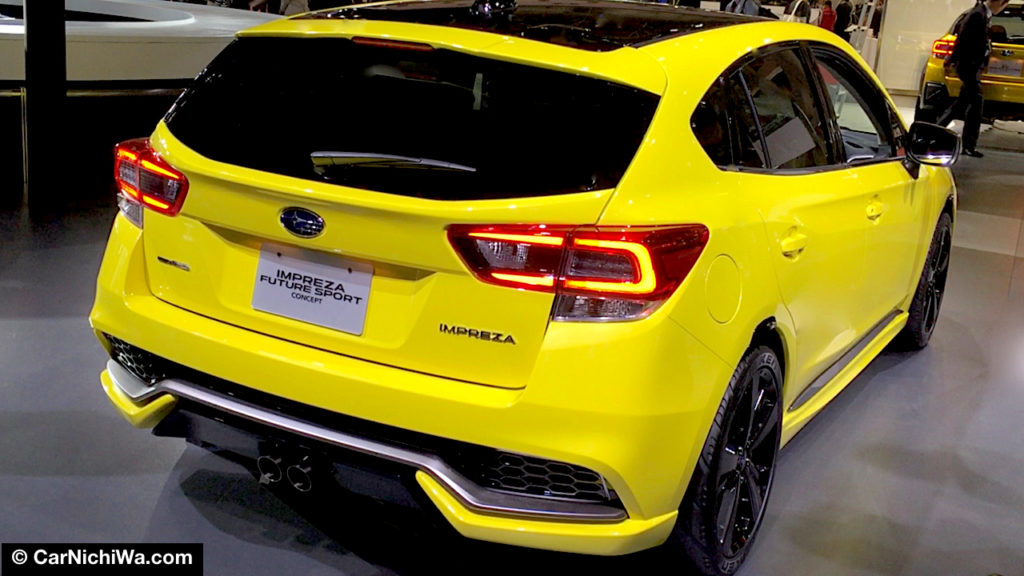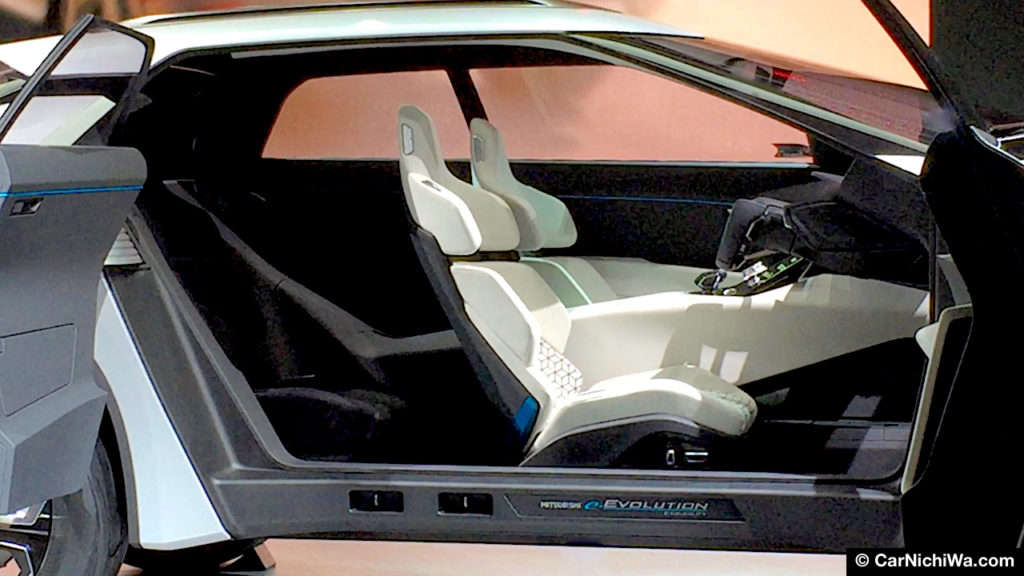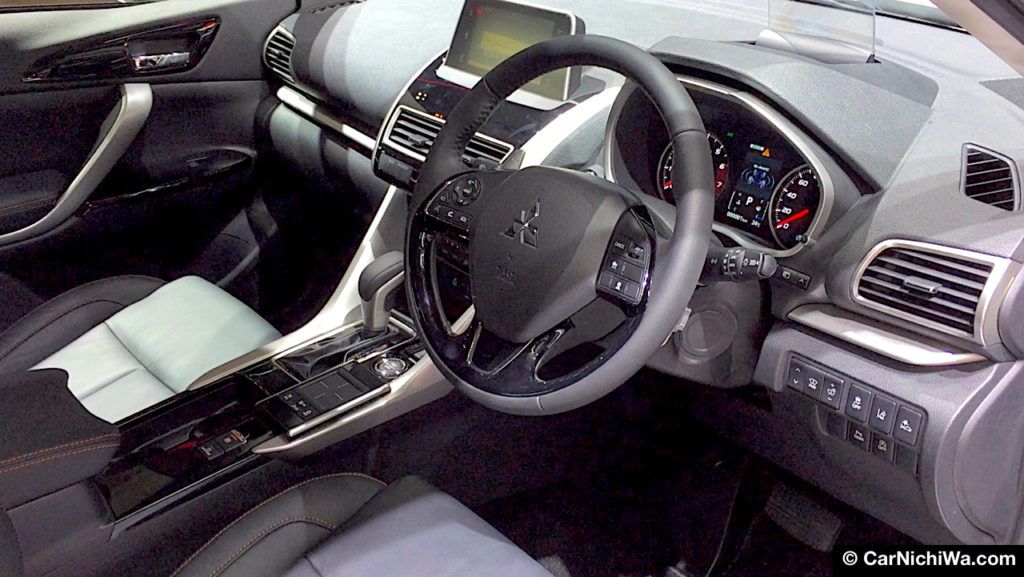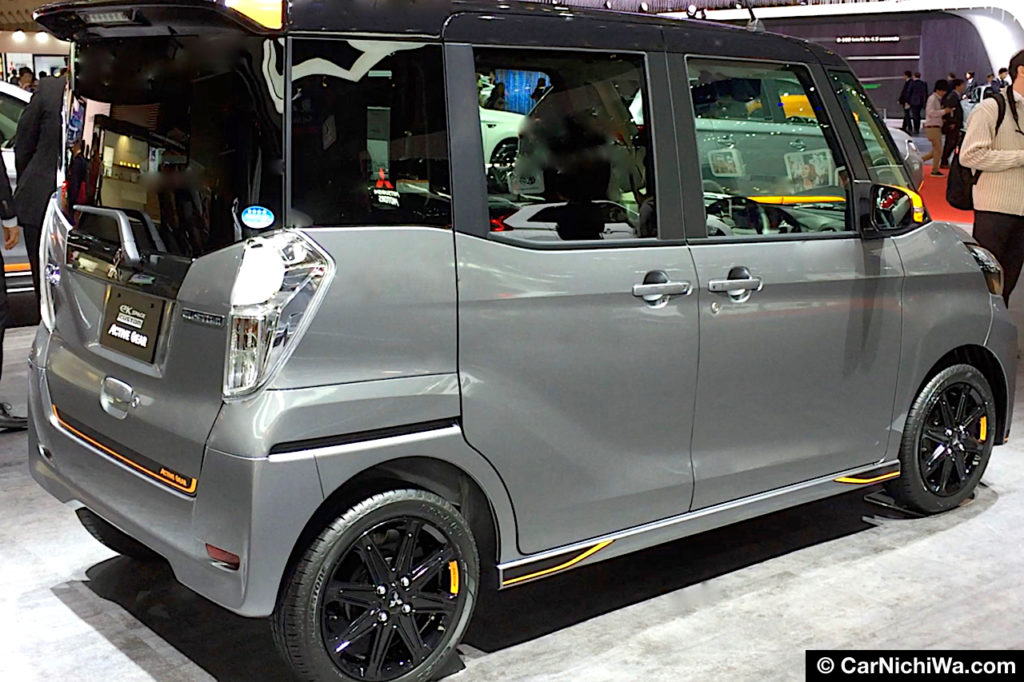By Steve Laser reporting from Tokyo, Japan
This year’s Tokyo Motor Show was held at the massive Tokyo Big Sight convention center in Ariake, Koto-ku, near the waterfront of Tokyo Bay. It was the fourth time the show was staged at Big Sight since moving from Makuhari Messe in Chiba in 2011.
Most visitors enter the Big Sight complex by walking under the huge twin inverted pyramids of the Conference Tower, an eight-story tall structure that’s one of the landmarks of Tokyo.
The 45th Tokyo Motor Show show this year drew more than 770,000 people to Big Sight. The busiest day was Nov 3, with 112,000 visitors. Let’s continue our show review with photos and videos that we made at the Nissan, Honda, Mazda, Subaru and Mitsubishi exhibits.
Nissan
With more than a dozen concept and production vehicles on display, Nissan promoted its wide array of models in Japan including sports cars, hybrids and EVs, luxury cars, mini vehicles, crossovers and vans. NISMO performance editions also took to the stage in Nissan’s exhibit dressed with a spiral design theme this year.
Our video above highlights the Nissan press conference at the Tokyo Motor Show. Daniele Schillaci, executive vice president for global marketing and sales, unveiled Nissan’s new IMx concept vehicle.
A special simulator (below) allowed visitors to experience the future of Nissan Intelligent Mobility. Nissan says the new all-electric IMx offers fully autonomous operation and a driving range of more than 600 km thanks to new high-capacity batteries with increased storage density.
IMx rides on Nissan’s new EV platform employing a pair of high-output electric motors at the front and rear for all-wheel drive. Combined output is quoted at 320 kW and an impressive 700 Nm of torque.
Following the press conference, we took a closer look at Nissan’s new IMx concept vehicle in our above video.
Among its potential abilities, Nissan says IMx could transport its owner to an airport, then park itself in a place where the vehicle can connect to a local power grid and act as a “virtual power plant” by returning electricity to the grid. When the owner returns, IMx could pick them up at the terminal and then drive home.
The futuristic cabin is designed to promote the concept of space found inside a traditional Japanese house. A wood grain-pattern display below the instrument panel provides a sense of the outdoors, similar to a shoji paper screen.
Using Artificial Intelligence, the driver can control the instrument panel with eye movements and hand gestures. When the driver activates a (future) version of Nissan ProPILOT fully autonomous operation for example, the system stows the steering wheel inside the dashboard and reclines the seats. (The driver can select Manual mode to restore the settings.)
In this video, we take a look at the recently introduced second-generation Nissan LEAF, along with the new LEAF NISMO concept car that made its debut at the show.
The NISMO Concept LEAF promotes a more sporty and dynamic character of the electric car. Exterior styling enhancements were designed by NISMO, Nissan’s motorsports and in-house tuning division. The changes are also said to be functional resulting in enhanced aerodynamic performance. The interior gains NISMO’s signature red accents for a sporty look.
Nissan also showcased the Serena NISMO, a new sporty version of the minivan set to go on sale in Japan this month.
As we’ve mentioned before, vans of all shapes and sizes remain very popular in Japan. Nissan’s Serena, a midsize model, offers a new NISMO edition dressed with custom aero parts on the outside and adorned with red accents.
The driver can take advantage of Serena NISMO’s sharper handling and sport-tuned suspension via a sporty steering wheel while the dash is enhanced with a suede-like finish. Performance is also bumped up thanks to a new engine control module and exhaust system.
This video highlights three models on display at the Nissan exhibit: The GT-R Premium Edition, Skyline (a separate sedan) and Note e-Power NISMO.
Nissan recently gave its flagship GT-R sports car a freshened appearance inside and out along with performance enhancements and new features. The Premium Edition features semi-aniline leather-trimmed seats and wears Ultimate Shiny Orange exterior paint on the display car.
GT-R’s 3.8-liter V6 24-valve twin-turbocharged engine handcrafted by Takumi technicians delivers 565 horsepower (419 kw / 570 PS) and 467 lb-ft (637 Nm) of torque. It’s teamed with a refined 6-speed dual-clutch transmission.
The Skyline (above) is one of Nissan’s current premium sports sedans (its sibling is sold in the U.S. as the Infiniti Q50). Skyline gains Nissan’s All-Around Safety Shield technology as standard. The sedan offers a high-performance hybrid system and Direct Adaptive Steering. Detail changes include new alloy wheels, steering wheel and shift knob designs along with an improved finish for the instrument panel.
Nissan’s Note e-POWER NISMO takes the regular production Note e-POWER and tunes it for more responsive sporty driving. In addition to enhanced interior and exterior design, it features improved performance and handling plus additional standard safety features including Intelligent Emergency Braking and Lane Departure Warning.
Nissan’s Dayz series of mini vehicles is very popular in Japan. Here we take a closer look on video of the Dayz Roox Highway Star on display at the Tokyo Motor Show.
Mini vehicles, also called Kei cars, are seen everywhere in Japan. While engine size is limited to 660cc and passenger capacity to four, automakers express their creativity with unique styling. Recent upgrades to the Nissan Dayz Roox Highway Star (built by NMKV Ltd., a joint venture between Nissan and Mitsubishi Motors) include revised front styling, standard emergency braking, improved navigation systems with Around View Monitor, and touch-panel auto climate control.
Nissan Shatai
Nissan’s new Paramedic Concept is based on the production NV350 Caravan that was launched this summer in Japan. Nissan plans to start sales of the new ambulance in Japan next year.
Nissan Shatai builds a variety of Nissan vans, trucks and buses including the NV200, NV350, Wingroad, Patrol, Armada, Quest and Elgrand. The new fifth-generation ambulance, called the Paramedic Concept at the show, carries a 1.6 kWh lithium-ion auxiliary battery designed to support life-saving medical equipment when patients are in remote areas or in need of emergency assistance.
Meanwhile, the new e-Fridge Concept is based on Nissan’s all-electric production e-NV200 van. The compact size makes it easier to park in urban environments, where large delivery trucks might be prevented from stopping. Equipped with an additional battery pack in the cargo area to power a refrigeration unit, the Nissan e-Fridge can store chilled foods.
Honda
The Honda badge can be found on a vast array of products across the globe, from cars and trucks to motorcycles, power products and even the Honda business jet. At the Tokyo Motor Show, Honda highlighted its energized focus on developing electrified models.
This video highlights the Honda press conference at the Tokyo Motor Show. Takahiro Hachigo, Honda CEO, introduced the new Honda Sports EV Concept that celebrates the joy of driving.
Honda’s new Riding Assist-e concept (above) ia an experimental motorcycle developed by applying balance control technologies Honda amassed through its research in the field of robotics. Powered by an electric motor, Riding Assist-e is designed to automatically balance itself at very low speeds, helping to reduce rider load.
Following its debut at the Frankfurt show, Honda’s Urban EV concept (above) was on display in Tokyo. It’s built on a newly developed, EV-only platform, and previews a mass-produced EV model for Europe and other markets. The Urban EV concept employs AI to display messages and greetings to onlookers on the front fascia.
Honda’s new Sports EV concept introduced in Tokyo takes the platform of the Urban EV and adds a generous portion of fun with a sporty coupe body that brings to mind Hondas of the past.
While the retro-boxy styling of the Urban EV reflects Honda’s early models like the N360 that recently celebrated its 50th anniversary and the current N-ONE mini-vehicle that Honda sells in Japan, the new Sports EV concept focuses on serious fun.
Will Honda build something like the Sports EV? With a production model based on the Urban EV confirmed for production, we wouldn’t be surprised if Honda adds a sportier version in the future.
Speaking of sporty, Honda showed a new edition of its S660 mid-engine sports car at the Tokyo Motor Show and we took a closer look in our video above.
Honda’s S660 Special β #komorebi edition (that’s the official name) is dressed with new light-tone trim on the seats and dash and sports a new Ivory Pearl exterior color along with a tan convertible top. The 660cc engine is mated to a CVT transmission. The car features Active City Braking (low-speed collision mitigation) while exterior color choices include Premium Star White Pearl and Flame Red.
Sporty new N-BOX Custom models (above) offer a unique look. The front fascia projects a wide stance while the grille extends to the corners. Sequential turn-signals are mounted above the grille. New inline LED headlights illuminate six lights on low-beam and nine lights on high beam.
Honda’s N-BOX is so popular in Japan that sales have topped more than 1 million units since launching in 2011. Now, Honda has debuted an all-new second-generation N-BOX. N-BOX gains the Honda SENSING™ suite of high-tech safety and driver-assistive technologies, including a new feature to help prevent false backward starts. Customers can select the 660cc DOHC naturally aspirated 3-cylinder engine that puts out 43kW (58PS) and 65Nm of torque, or the turbo with 47kW (64PS) and 104Nm.
The latest Honda CR-V, scheduled to go on sale next year in Japan, will offer Honda’s Sport Hybrid i-MMD two-motor hybrid system in both front-wheel and 4WD versions. A third-row seat will also become available on the non-hybrid model. We hope to see the CR-V hybrid added to Honda’s U.S. lineup.
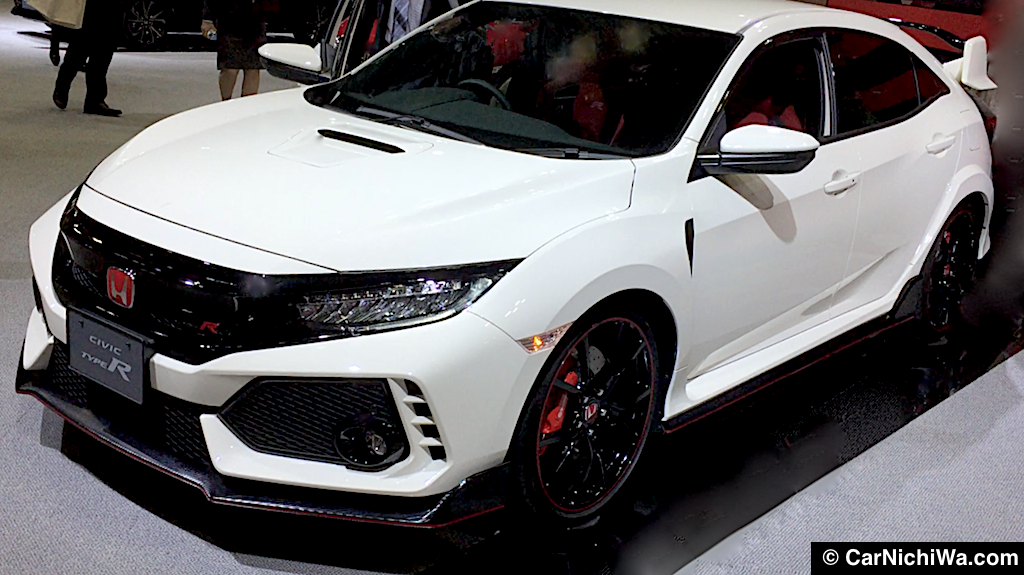 While Honda’s new Civic Sedan is produced in Japan, the five-door Hatchback and Type R (above) models are built at Honda of the UK Manufacturing in Swindon, U.K. The previous generation Civic Type R was sold in Japan, in limited numbers. Sales of the new generation high-performance hatchback in Japan are not limited, says Honda.
While Honda’s new Civic Sedan is produced in Japan, the five-door Hatchback and Type R (above) models are built at Honda of the UK Manufacturing in Swindon, U.K. The previous generation Civic Type R was sold in Japan, in limited numbers. Sales of the new generation high-performance hatchback in Japan are not limited, says Honda.
Honda’s NSX Sport Hybrid SH-AWD® has a high-efficiency, high-output three-motor hybrid system with a newly developed direct-injection V6 twin turbo engine. (NSX is sold as a Honda in Japan since the Acura brand isn’t offered here.)
This time around, the NSX is an American export. At the Performance Manufacturing Center adjacent to Honda’s automobile plant in Marysville, Ohio, approximately 100 associates are engaged in body construction, painting and final assembly of the new sports car.
A fantastic array of Honda Racing machines riding on two and four wheels was on display at Tokyo. The 2017 McLaren Honda Formula 1 car (MCL-32) is built with carbon-fiber monocoque composite construction. Honda RA 617H features a compact, 1.6-liter V6 turbo engine and kinetic and heat motor-generator units.
Cumulative production of the Honda Super Cub has reached 100 million units, so Honda exhibited 60 years of Cub history including current models in Tokyo. The original Super Cub C100 was released in August 1958. Honda announced the all-new Super Cub 50 and Super Cub 110 will go on sale this month in Japan.
Mazda
Mazda garnered plenty of attention at the Tokyo Motor Show this year by introducing two new stunning concept cars – the Kai hatchback and Vision Coupe.
With its evolved KODO design and SKYACTIV-X engine, the new Kai offers a look at the styling and engineering direction for a compact Mazda in the future.
Following Mazda’s press conference, I stood for several minutes and watched the Kai spin slowly on an elevated platform. This car is beautiful to behold from any angle. While I didn’t get a photo of the interior, Mazda says it’s “infused with the ‘Jinba-ittai’ connection between the car and driver.”
Mazda calls the next-generation SKYACTIV-X engine a revolutionary powerplant that combines the free-revving characteristics of a gas engine with the fuel efficiency, torque and fast initial response of a diesel.
Mazda’s new Vision Coupe was perhaps the most beautiful concept car at this year’s Tokyo Motor Show. The display stand’s lighting perfectly accented the car’s dynamic lines.
While Kai offers a glimpse into Mazda design of the near future, the Vision Coupe is a bit more far out. Since 2010, Mazda has been working to craft cars that promote the “dynamic beauty of life through application of its KODO – Soul of Motion design philosophy.”
We captured our first look on video of Mazda’s new CX-8 crossover (above). It’s scheduled to go on sale in December in Japan.
While Mazda has already introduced the CX-9 in the U.S and other markets, a separate model, called CX-8 will be sold in Japan. A bit smaller than its larger sibling, CX-8 offers three rows of seats and Mazda’s SKYACTIV-D 2.2L diesel engine.
The Mazda Roadster RF continues to capture our hearts. Called the MX-5 Miata RF in the U.S. market, the fastback-style retractable power top is said to have the “world’s shortest” opening or closing time of just 13 seconds. Roadster RF is powered by the SKYACTIV-G 2.0L gas engine. With greater displacement than the engine in the soft-top Roadster in Japan, Mazda says it “realizes lithe and refined driving performance that matches the model’s design.”
Subaru
Subaru staged the premiere of the sporty new VIZIV Performance Concept. It’s the first sedan for the VIZIV concept series and likely previews the styling direction for the next generation Legacy.
Our video shows Subaru’s new VIZIV Performance Concept making a slow spin on the display stand at the Tokyo Motor Show. We can only imagine how good it would look at the racetrack or on the street.
Based on Subaru’s “Dynamic x Solid” design philosophy, the automaker says this next-generation sports sedan “encapsulates driving enjoyment.” We really like the bold look with muscular fenders and the use of carbon fiber parts throughout the body, including the roof.
While the VIZIV Performance Concept features Subaru’s signature boxer engine and Symmetrical AWD, it also offers advanced driver-assistance functions combining next-generation EyeSight technology. We hope that a future production model retains the snazzy look of this concept.
Subaru and its motorsports group Subaru Tecnica International (STI) introduced the S208, a limited-edition model based on the WRX STI. Only 450 units will be sold in Japan.
Under the hood of the new 208, a specially tuned 2.0-liter turbo boxer engine puts out 329 PS and 432 Nm torque. Handling is enhanced by a quicker steering gear ratio, while STI components include a flexible tower brace, DampMatic®II front suspension with adjustable damping and front-rear Active Torque Vectoring. S208 rides on STI-designed BBS 19-inch forged alloy wheels and 255/35R19 tires.
The specially trimmed interior features STI-designed Recaro® front bucket seats, sports instruments, red dash panel trim, Ultrasuede® wrapped steering wheel, STI-designed push-button ignition, and a serial number plate on the console.
Subaru also introduced a new STI Sport model for the BRZ coupe (above). The suspension gains flexible V-braces and a flexible draw stiffener up front developed with STI technology. Exclusive 18-inch alloy wheels and high-performance tires are included and so are SACHS dampers and coil springs tuned by STI.
STI Sport BRZ retains the 2.0-liter production Boxer engine and can be teamed with a manual or automatic gearbox. Interior mods include Alcantara® trimmed seats, a special TFT multi-information display and Piano Black trim. The “Cool Grey Khaki Edition” featuring the special paint on the show car will be limited to just 100 units.
Subaru’s Fun Adventure Concept is based on the production XV (also known as the Crosstrek) with mods added just for fun. We liked the huge fender moldings, black alloy wheels, off-road-style tires and shiny metallic yellow paint (plus the camping tent on the roof).
The Impreza Future Sport concept (above) enhances the production model hatchback with a customized look. It features a special body kit, new front and rear fascias, lowered ride height, performance exhaust and pearl yellow paint to create a unique and sporty ride for the street.
Mitsubishi
Mitsubishi staged the world premiere of a new concept vehicle called the e-Evolution. As a vision of a future all-electric crossover, Mitsubishi says the e-Evolution uses high-torque and high-performance electric motors supplied by a high-capacity battery system.
Our video (above) highlights the dramatic styling of Mitsubishi’s new e-Evolution concept. We hope the radical styling of the concept carries over to a future production model.
The e-Evo’s triple-motor 4WD uses a single motor to power the front wheels and a new Dual Motor Active Yaw Control system that couples two motors in the rear via an electronically controlled torque-vectoring unit.
Meanwhile, an array of sensors allows an Artificial Intelligence system to “instantly read changes in road and traffic conditions, as well as the driver’s intent.” After building a picture of the driver’s skill level, the system constructs a training program that provides advice through voice dialogue and a display screen.
Mitsubishi’s new Eclipse Cross was also on display at the show. The name for this new compact crossover reminds us of the automaker’s previous Eclipse cars.
A wedge-shaped profile, forward-raked rear window and muscular fenders of the Eclipse Cross project a sporty image. The new crossover features an electronically controlled 4WD system with Super All-Wheel Control. Powerplant choices include a new 1.5-liter direct-injection gas turbo teamed with a CVT and Sport Mode, plus a 2.2-liter common rail direct-injection turbodiesel with an 8-speed automatic.
Inside, Eclipse Cross sports a horizontal dashboard theme, a smartphone-linked display audio system, and offers a Head-up Display for the driver. A touchpad controller in the center console lets the driver operate the audio system.
More than a dozen vehicles on display at the Mitsubishi stand offered the opportunity to check out vans like the Delica D:5 (above).
This Delica and the smaller eK Space Custom (below) were enhanced with Active Gear trim including gray and black exterior tones highlighted with yellow accents. Production Delica models offer seating for up to seven passengers, 4WD, plus gas or turbodiesel engines.
Mitsubishi’s eK Space Custom is a good looking Kei car, especially when it’s decked out with the Active Gear look. It’s built by NMKV, Ltd., a joint venture between Mitsubishi and Nissan that also produces the Nissan Dayz Roox Highway Star.
Visit the following links for our additional stories:
2017 Tokyo Motor Show Part 1 – Toyota and Lexus Displays – Reporting from Japan
2017 Tokyo Motor Show Part 3 – Suzuki, Daihatsu, Isuzu, Yamaha and Tokyo Connected Lab
CarNichiWa.com thanks the Tokyo Motor Show for providing us with a press pass to the media preview days. We also thank Nissan Motor Co., Ltd., Nissan Shatai Co., Ltd., Honda Motor Co., Ltd., Mazda Motor Corp., Subaru Corp. and Mitsubishi Motors for access to display vehicles for this news report.
Note: Production vehicles, features, specifications and launch dates in this story apply to Japanese market models and are subject to change without notice.
Story, photos and videos © 2017 CarNichiWa.com
